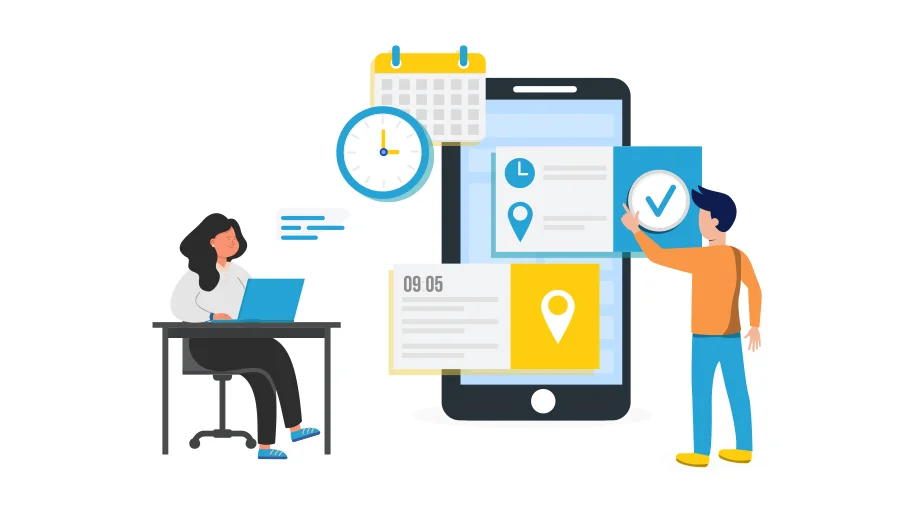In a single day, a facility manager has to oversee multiple requirements. These include keeping a close eye on expenses, sourcing and managing vendors and allocating tasks to the on-ground workers.
However, it can become challenging to manage portfolios of multiple properties, spread across the country spanning different time zones. A slight mismanagement or delay in service delivery will result in one outcome– loss of business.
Automating facilities management workflows bring benefits such as improved resource allocation, enhanced communication, proactive maintenance, compliance adherence, data-driven decision-making, and enhanced customer satisfaction.

Research suggests that real estate is the second-highest cost for an organization and effective space management can result in cost savings up to 30%. The CEO Study by IBM Institute for Business Value 2021 suggests that 56% of CEOs emphasize the need to “aggressively pursue” operational agility and flexibility in the coming 2-3 years. As employees return to the workplace post-covid, it becomes a destination to gather and collaborate.
Today, a facility manager’s job must be expanded to adopted newer ways of functioning. To streamline workflow, ditch paper work and stay ahead of competition, a single paradigm shift is the solution- field services automation.
The automation of various facility management services, such as vendor management, in-house service tracking, work order tracking, vendor invoicing, and worker notifications for maintenance or service requirements, greatly enhances efficiency. By utilizing a cloud-based system, facilities management can streamline operations more efficiently.
In this blog, we will explain some of the key challenges faced by a facility manager and how the various features of workflow automation is the solution.
Challenges Faced By a Facility Manager:
A facility managers faces several challenges, ranging from operational issues to strategic concerns. Some of the key challenges include:
Job Scheduling Conflicts
In a large facility management company, there will be hundreds of job requests every day, from new customers requests to scheduled maintenance activities. Moreover, manual assignment of tasks to field workers and coordination with external vendors can be tedious. Task assignment entails another ambiguity- is it being done properly and on time?
By automating your workflow, you will be able to replace manual tasks with a finger touch. The mobile application will be your medium of communication from beginning to the end of the workflow. Assigned tasks will pop as a notification on your employees’ phone along with the instructions given by you. Similarly, upon task completion, the field workers can update on the app.
In the facility management industry customer satisfaction plays a vital role in your business success which comes with high quality service. When assigned tasks manually, the chances of mapping the right person for the right job considering the skill, location, etc are slightly low. For instance, a client has requested a quick inspection of smoke detectors and ACs in their office building.
Using a scheduling and job dispatch, you can automatically assign work orders to technicians based on their availability, location, and expertise. This ensures that the closest technician with the required skills is dispatched to a job, reducing travel time and maximizing productivity.
Lack of real-time field-data
If you are using traditional methods as a manager, it is likely that your work day ends only after your workers’ confirmation of the task completion. What follows it is manual entry in paper sheets– a practice with which you may be risking losing a lot of your data.
An increasing number of businesses are adopting web and cloud-based solutions to enhance transparency in their logistics operations. These solutions utilize mobile-based processes and services to improve traceability throughout the entirety of their operations.
Digital signatures, photo-proofs, feedback etc. can be collected on the cloud using field automation systems. You can access this data anywhere, without waiting for the entire day or having to manually collate data.
Suppose, you are responsible for a janitorial team that maintains cleanliness in a commercial building and also oversees the installation of new office furniture in a corporate building. What will be the most time-efficient way to check for the work done? Your employees can capture and attach media such as photos and signatures in customized forms to mark their tasks as done. All media will then be available to you in the form of a report, thereby saving you time physically checking it.
Reimbursement Issues
In the facility management industry, you will have different field workers working at different locations. This is where location tracking enables managers to manage all the field employees with one centralized dashboard.
Equipping field workers with mobile apps for work automation allows them to access and update information in real-time. They can receive work orders, submit inspection reports, and track their progress directly from their mobile devices. For instance, a field employee may be required to travel to multiple job sites in a single day– a plumbing assignment at a residential complex may be followed by a maintenance visit at a hospital 4km away. Since companies have to reimburse fuel costs, a comprehensive report about the places traveled and distance covered will be cost-effective.
GPS tracking provides access the real-time location of workers. allGeo’s mobile application can track daily travels and compile a bread-crumb report for you to cross-check the mileage covered.
Lone worker Hazards
A facilities management worker conducting maintenance in an isolated area of a building could encounter hazards like electrical faults, equipment malfunctions, or slip-and-fall accidents. Without immediate assistance, the worker’s safety could be compromised. With a safety app in place, workers can simply push the SOS button on the app or press the power button four times to send an alert to the manager.
Conclusion
By leveraging these automation technologies, facility management workflows can be streamlined, repetitive tasks can be eliminated, and operational efficiency can be significantly improved. This allows you and your teams to focus on higher-value activities, make data-driven decisions, and deliver better services to occupants and stakeholders.
Depending on the nature of your facility management operations, you can build a customized workflow and witness a boost in productivity.


